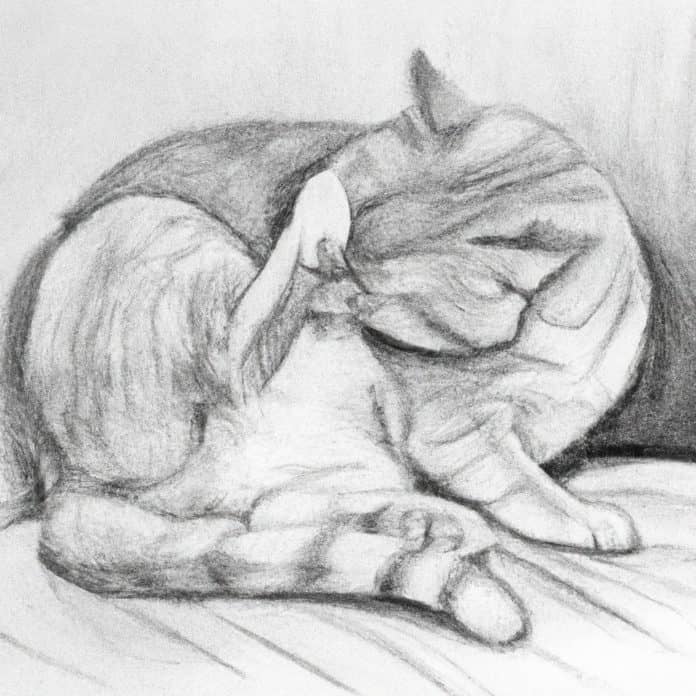Dear VetBabble,
My indoor cat seems to have dandruff. What is the safest and best way to treat this issue? Thank you!
It is essential to identify the underlying cause for your cat’s dandruff before deciding on a treatment plan. It could be due to mites, dry skin, a lackluster coat, a medical issue, or even related to their diet. Treatment options will vary depending on the diagnosis, so taking your cat to the vet for a thorough evaluation is the best course of action. In this article, we will explore different potential causes of dandruff in cats and ways to treat it.
Why Is My Cat Experiencing Dandruff?
Different reasons might be responsible for your cat’s dandruff. Let’s explore some common causes:
- Mites: Some cases of dandruff in cats are due to mites, also known as Skin Problems in Cats. Common Causes and Treatment. Cheyletiella mange mites, for example, can cause flaking and itching. If your vet suspects mites, they will conduct a skin scraping test to confirm the presence of these parasites.
- Dry Skin and Dull Fur: A lack of specific nutrients, such as Omega-3 fatty acids, can cause dry skin and a dull coat. Cats cannot produce these essential fatty acids on their own, so they must be included in their diet.
- Medical Conditions: Some medical conditions, like hypothyroidism, can cause skin issues such as dandruff. Your vet will rule out these medical problems during the examination.
- Allergies: Cats can suffer from environmental allergies, which are detailed further in Cat Allergies. These can cause skin irritations and, in some cases, dandruff.
How Can I Treat My Cat’s Dandruff?
Treatment methods will be based on your cat’s diagnosis. Here are some potential treatments:
- Managing Mites: If mites are the root cause of the dandruff, your vet will recommend an appropriate treatment plan. For example, they might prescribe a topical medication to eliminate the mites and provide relief from itching.
- Dietary Adjustments: Ensuring your cat has a diet rich in Omega-3 fatty acids can help provide them the nutrients they need for a healthy skin and coat. Consider introducing a high-quality cat food that contains these essential fatty acids or supplementing their diet through fish oil capsules.
- Medication and Topical Treatments: If there’s an underlying medical condition or an allergy causing the dandruff, your vet will prescribe appropriate treatments, such as medication or topical creams, to address the issue.
- Grooming: Regular grooming can also help alleviate dandruff in cats, as it removes loose fur and helps distribute the fur’s natural oils. Using a brush specifically designed for cats can be beneficial.
Preventing Dandruff in Cats
Once you have identified and treated the cause of your cat’s dandruff, you may want to consider preventative measures. Here are some tips:
- Regular Vet Visits: Ensuring your cat has routine check-ups can help your vet identify any potential issues before they turn into bigger problems.
- Diet: Maintaining a balanced and nutrient-rich diet will ensure your cat has all the necessary vitamins and minerals they need for proper skin and fur health. Remember to provide fresh water every day as dehydration can lead to dry skin and dandruff.
- Grooming: Help maintain your cat’s healthy skin and coat by grooming them regularly. It will not only benefit their fur but also helps you spot any changes or issues early on.
- Monitor Environmental Factors: Be aware of your cat’s environment and try to minimize potential allergens. For instance, keep their bedding clean and free of dust, vacuum regularly, and avoid using strong-smelling household chemicals that could irritate their skin.
By following these guidelines, you can help keep your feline friend free from dandruff and maintain their beautiful and healthy coat. Always consult with your veterinarian if you’re unsure about your cat’s condition or notice any changes in their appearance or behavior. For more information about skin and hair issues in cats, please visit Hair Loss in Cats.









